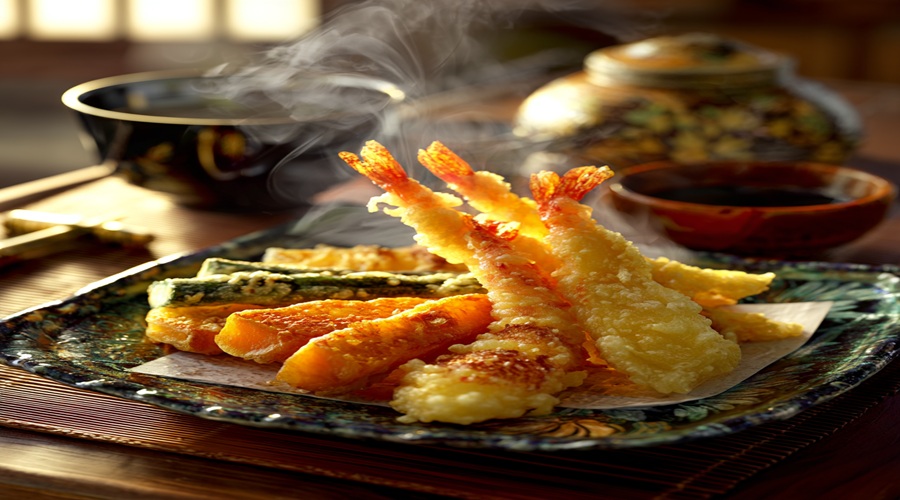
Tempura
Japanese Name
てんぷら
tenpura
Description
- Tempura is a traditional Japanese dish made by coating seafood or vegetables in a light batter and deep-frying them until they are crispy and golden. It is often served with dipping sauce, rice, or noodles. Tempura is known for its delicate, crunchy texture and is enjoyed both in restaurants and at home in Japan.
History
- Historical Background: Tempura was introduced to Japan in the 16th century by Portuguese missionaries and traders. The word "tempura" is believed to originate from the Latin word "tempora", referring to “times of fasting,” when Catholics avoided meat and ate fried vegetables or seafood instead.
- Cultural Significance: Over time, tempura was adapted into Japanese cuisine and refined into the delicate and refined form known today. It became especially popular during the Edo period (1603–1868) as a common street food in Tokyo (then Edo).
- Preparation: Ingredients are dipped in a cold flour and water batter and quickly deep-fried in hot oil. The batter is kept light to preserve the flavor and texture of the ingredients.
- Modern Use: Tempura is now enjoyed both in Japan and internationally, often served with dipping sauce, rice, or noodles.
Learn more Japanese words?
Play our free typing game and master Hiragana & Vocabulary in a Zen atmosphere. 🍵
🎮 Play Game